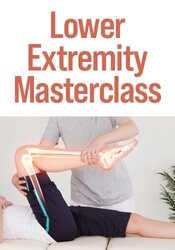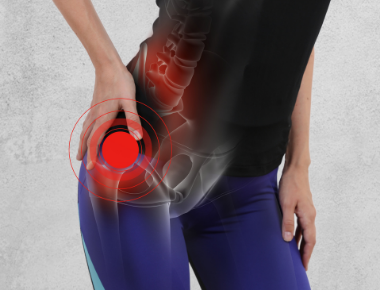Let the Joint-by-Joint Approach Guide Your SI Joint Treatment
Get to the Root Cause of Pain Faster

No matter if you’re a physical therapist, chiropractor, occupational therapist, athletic trainer, or massage therapist…if you see people, you see SI joint pain.
And to successfully treat this kind of pain, you must look at the joints above and below the source.
In this quick video, Dr. Jon Mulholland walks you through the joint-by-joint approach: why it works and how it can greatly influence your treatment plan.
Best of all? This approach is applicable for all your patients, from a “regular Joe” to an Olympic athlete — Dr. Mulholland has treated them all by utilizing this protocol.
Let’s consider a typical 55-year-old golfer. He’s typically sitting at his desk, sitting in the car…no hip mobility, thoracic spine blocked up, weak through the core.
The first warm day in May, he gets out on the golf course and is swinging a golf club over 200 times.
A normal golf swing requires excellent hip mobility, particularly internal rotation on both legs. The golfer in this example probably doesn’t have any of that. So what does he do? He’s still cranking out that golf swing. He’s doing it, but he’s finding that rotation elsewhere since he’s not getting it in his hips.
Where is he most likely getting it based on the joint-by-joint approach? Either the joint above or the joint below the problem.
If our golfer doesn’t have the rotation in his hips, he’s going to be rotating his lumbar spine or knees.
He’ll come into your office with lower back pain, but you'll only be patching things up until we fix his hip mobility. That’s the concept of the joint-by-joint approach.
Thoracic mobility. Lumbar SI stability. Hip mobility. That’s what we need to look at in order to treat SI joint pain. Look above and below the source of the pain.
And to successfully treat this kind of pain, you must look at the joints above and below the source.
In this quick video, Dr. Jon Mulholland walks you through the joint-by-joint approach: why it works and how it can greatly influence your treatment plan.
Best of all? This approach is applicable for all your patients, from a “regular Joe” to an Olympic athlete — Dr. Mulholland has treated them all by utilizing this protocol.
Let’s consider a typical 55-year-old golfer. He’s typically sitting at his desk, sitting in the car…no hip mobility, thoracic spine blocked up, weak through the core.
The first warm day in May, he gets out on the golf course and is swinging a golf club over 200 times.
A normal golf swing requires excellent hip mobility, particularly internal rotation on both legs. The golfer in this example probably doesn’t have any of that. So what does he do? He’s still cranking out that golf swing. He’s doing it, but he’s finding that rotation elsewhere since he’s not getting it in his hips.
Where is he most likely getting it based on the joint-by-joint approach? Either the joint above or the joint below the problem.
If our golfer doesn’t have the rotation in his hips, he’s going to be rotating his lumbar spine or knees.
He’ll come into your office with lower back pain, but you'll only be patching things up until we fix his hip mobility. That’s the concept of the joint-by-joint approach.
Thoracic mobility. Lumbar SI stability. Hip mobility. That’s what we need to look at in order to treat SI joint pain. Look above and below the source of the pain.
Get More Evidence-Based Treatment Strategies for Enhanced Recovery

Maximize patient outcomes through comprehensive strategies, innovative tools, and fresh new insight. This advanced level course provides the full spectrum of assessment and intervention for every patient type and ability level from the ground up – feet, ankles, knees, hips and SIJ – it’s all here!
Meet the Expert:
Dr. Jon Mulholland is a sports chiropractor and strength coach who has helped athletes of all levels with injury recovery and performance enhancement. He earned a Bachelor of Science degree in Exercise Science from Ithaca College in 1996, and his Doctor of Chiropractic degree from Northwestern Health Sciences University in 2000. Additionally, he has post-graduate certifications as a Certified Chiropractic Sports Practitioner (CCSP) and a Certified Strength & Conditioning Specialist (CSCS).
In addition to running his own practice, Dr. Mulholland has also acted as the Chiropractic Consultant for the United States Olympic Training Center in Lake Placid, NY, successfully treating dozens of Olympic athletes. He has traveled extensively as one of the team chiropractors for the US Bobsled & Skeleton Teams. He has worked multiple World Championship events in a variety of sports, and has treated athletes from dozens of different countries. He was also the Sports Medicine & Performance Enhancement consultant for the New Zealand Cycling Teams at the 2012 Summer Olympic Games in London, where he helped the team win two Olympic medals.
Currently, he is the owner/operator of Ideal Athlete Chiropractic, a sports chiropractic clinic in Plattsburgh, NY. He also travels extensively lecturing on a wide variety of sports injury and rehabilitation topics.
Learn more about their educational products, including upcoming live seminars, by clicking here.
In addition to running his own practice, Dr. Mulholland has also acted as the Chiropractic Consultant for the United States Olympic Training Center in Lake Placid, NY, successfully treating dozens of Olympic athletes. He has traveled extensively as one of the team chiropractors for the US Bobsled & Skeleton Teams. He has worked multiple World Championship events in a variety of sports, and has treated athletes from dozens of different countries. He was also the Sports Medicine & Performance Enhancement consultant for the New Zealand Cycling Teams at the 2012 Summer Olympic Games in London, where he helped the team win two Olympic medals.
Currently, he is the owner/operator of Ideal Athlete Chiropractic, a sports chiropractic clinic in Plattsburgh, NY. He also travels extensively lecturing on a wide variety of sports injury and rehabilitation topics.
Learn more about their educational products, including upcoming live seminars, by clicking here.



